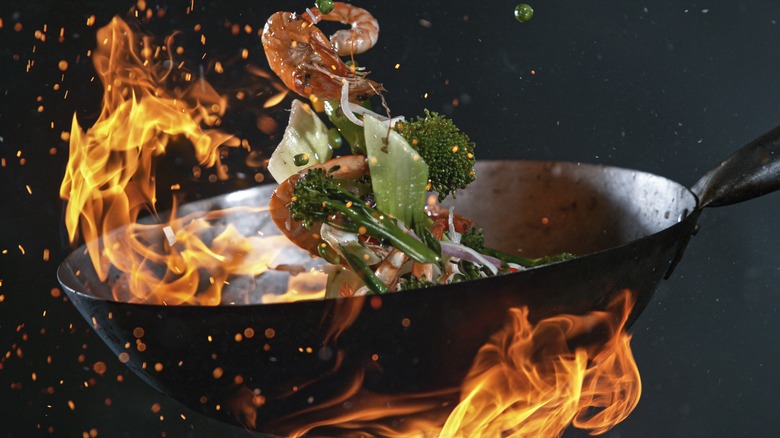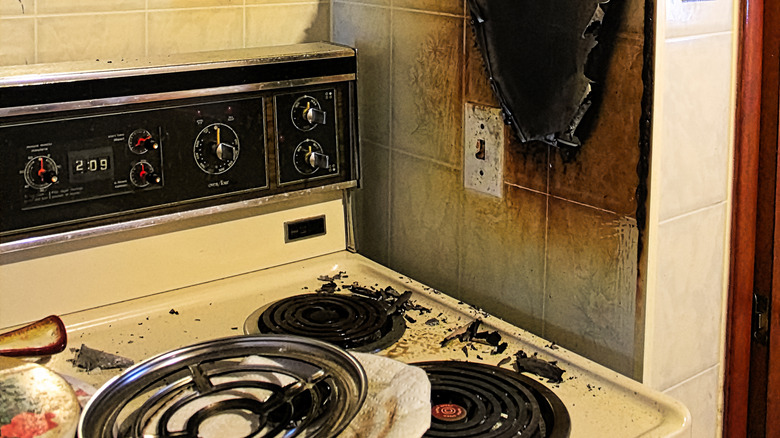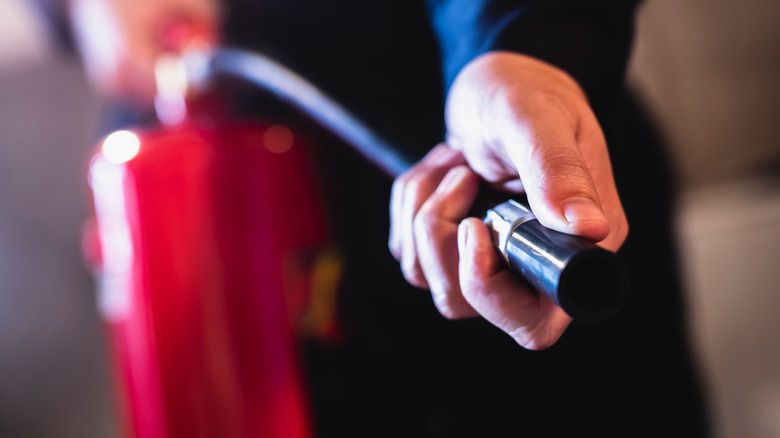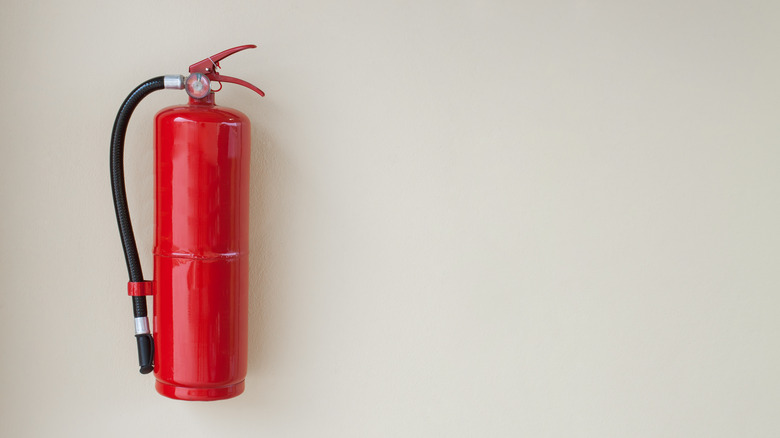How To Safely Extinguish A Grease Fire
Making and sharing food — whether it's for a meticulously planned dinner party or a quick chicken casserole for a weekday meal – is truly one of the most wonderful experiences. Cooking can be a whole wide world in its own right, but it must be treated with care.
For all of the fun and feasting to be had, kitchens are extremely hazardous. They're full of high temperatures, sharp edges, heavy blunt items, and potentially hazardous materials. You need to be alert and coherent at all times if you want to avoid disaster. Grease fires or cooking oil fires are one of the dangers that can potentially land you and your loved ones in the emergency room if handled incorrectly. It may seem as if these disasters are less than likely in your kitchen, and it may seem like you would remain calm and act swiftly if it did happen, but it's better to know your facts and be safe than be sorry.
The facts and statistics
Grease fires or cooking fires are categorized as Class B fires, according to UCLA Health. Amongst the many categories of fire, Class B identifies those of flammable liquids like gasoline, propane, grease, and cooking oils. The fluid nature of this kind of fuel makes the fire particularly volatile.
According to the findings from the National Fire Protection Association, cooking caused nearly half (49%) of all home fires and 44% of all home-fire-related injuries in the United States between 2014 to 2018. And when it comes to cooking fires, grease and oil are often involved. During those same years, 58% of civilian deaths and 76% of civilian injuries related to cooking food involved oil or grease fires. Grease and oil fires also frequently spread to other parts of the house, causing property damage as well as further endangering lives. Between 2014 and 2018, 77% of property damage from fires involving cooking began as cooking oil or grease fires.
What to do with a grease fire
In the kitchen, grease fires occur when cooking oil, grease, lard, or some other form of fat or lipid is ignited and begins to burn. This ignition happens very quickly (too quickly to react to) and spreads literally like wildfire, as demonstrated in this video by the Orange County Fire Department.
Bruce D. Bouch, a fire program specialist with the U.S. Fire Administration, explained to the New York Times Magazine that when dealing with grease fires, the first thing to do is turn off your burner or the stove. Then cover the flames with a metal lid or pot and leave covered until there is no more heat, this is meant to cut off the fire's air supply. If the fire is growing larger or is inaccessible, then use a fire extinguisher. If at any point the fire begins to spread and becomes unmanageable, immediately evacuate the premises, notify those who could be affected, and call 911.
What not to do
Again, grease fires are very volatile and must be treated very specifically otherwise the fire will spread, per Consumer Product Safety Commission (CPSC).
DO NOT pour water or any other liquid onto the fire. Class B fires are liquid fuel-based, which means pouring water on the grease fire will only violently spread the fuel and the fire around.
DO NOT throw flour, baking powder, salt, or any potentially hazardous materials onto the fire. These substances have different chemical makeups and can potentially react with the fuel and the fire to worsen the situation, per Fire Rescue 1.
DO NOT attempt to move the fire source or fight the fire with unconventional methods. The methods listed by experts should be the only methods used to interact with the fire. According to Fire Rescue 1, the most common burns on victims are found on the hands and arms of those who tried to fight the fire themselves.
To reduce the chances of this happening in your kitchen and to be ready if it ever does, the CPSC recommends keeping a fire extinguisher near the kitchen and always checking on what heat sources are interacting with what ingredients while cooking. And again, if at any point you are unsure of what to do, call 911 immediately.



